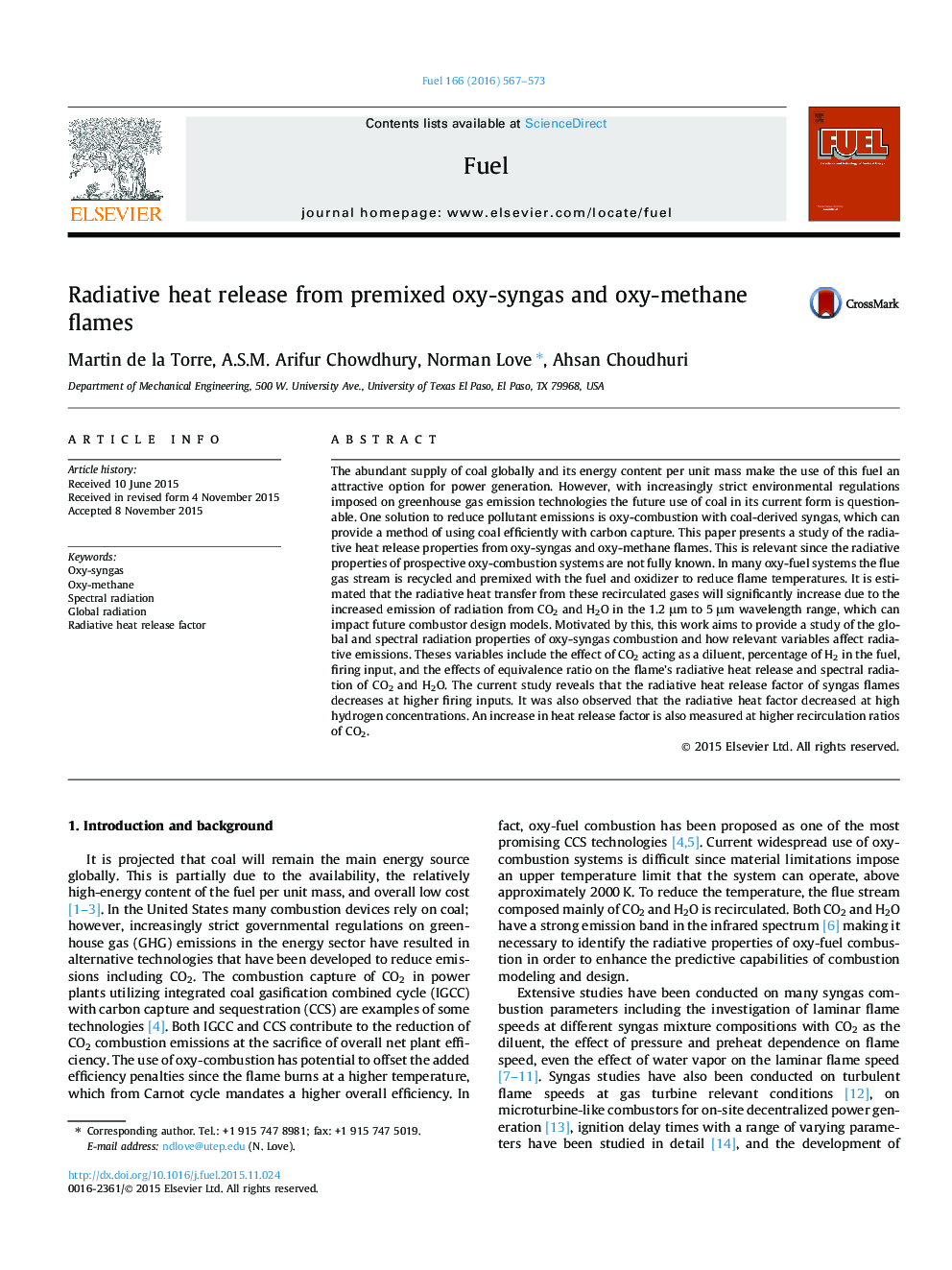| کد مقاله | کد نشریه | سال انتشار | مقاله انگلیسی | نسخه تمام متن |
|---|---|---|---|---|
| 6634409 | 461106 | 2016 | 7 صفحه PDF | دانلود رایگان |
عنوان انگلیسی مقاله ISI
Radiative heat release from premixed oxy-syngas and oxy-methane flames
ترجمه فارسی عنوان
انتشار گرما شعاعی از شعله های هیدروژن سابق گازی و اکسایش متان
دانلود مقاله + سفارش ترجمه
دانلود مقاله ISI انگلیسی
رایگان برای ایرانیان
موضوعات مرتبط
مهندسی و علوم پایه
مهندسی شیمی
مهندسی شیمی (عمومی)
چکیده انگلیسی
The abundant supply of coal globally and its energy content per unit mass make the use of this fuel an attractive option for power generation. However, with increasingly strict environmental regulations imposed on greenhouse gas emission technologies the future use of coal in its current form is questionable. One solution to reduce pollutant emissions is oxy-combustion with coal-derived syngas, which can provide a method of using coal efficiently with carbon capture. This paper presents a study of the radiative heat release properties from oxy-syngas and oxy-methane flames. This is relevant since the radiative properties of prospective oxy-combustion systems are not fully known. In many oxy-fuel systems the flue gas stream is recycled and premixed with the fuel and oxidizer to reduce flame temperatures. It is estimated that the radiative heat transfer from these recirculated gases will significantly increase due to the increased emission of radiation from CO2 and H2O in the 1.2 μm to 5 μm wavelength range, which can impact future combustor design models. Motivated by this, this work aims to provide a study of the global and spectral radiation properties of oxy-syngas combustion and how relevant variables affect radiative emissions. Theses variables include the effect of CO2 acting as a diluent, percentage of H2 in the fuel, firing input, and the effects of equivalence ratio on the flame's radiative heat release and spectral radiation of CO2 and H2O. The current study reveals that the radiative heat release factor of syngas flames decreases at higher firing inputs. It was also observed that the radiative heat factor decreased at high hydrogen concentrations. An increase in heat release factor is also measured at higher recirculation ratios of CO2.
ناشر
Database: Elsevier - ScienceDirect (ساینس دایرکت)
Journal: Fuel - Volume 166, 15 February 2016, Pages 567-573
Journal: Fuel - Volume 166, 15 February 2016, Pages 567-573
نویسندگان
Martin de la Torre, A.S.M. Arifur Chowdhury, Norman Love, Ahsan Choudhuri,
